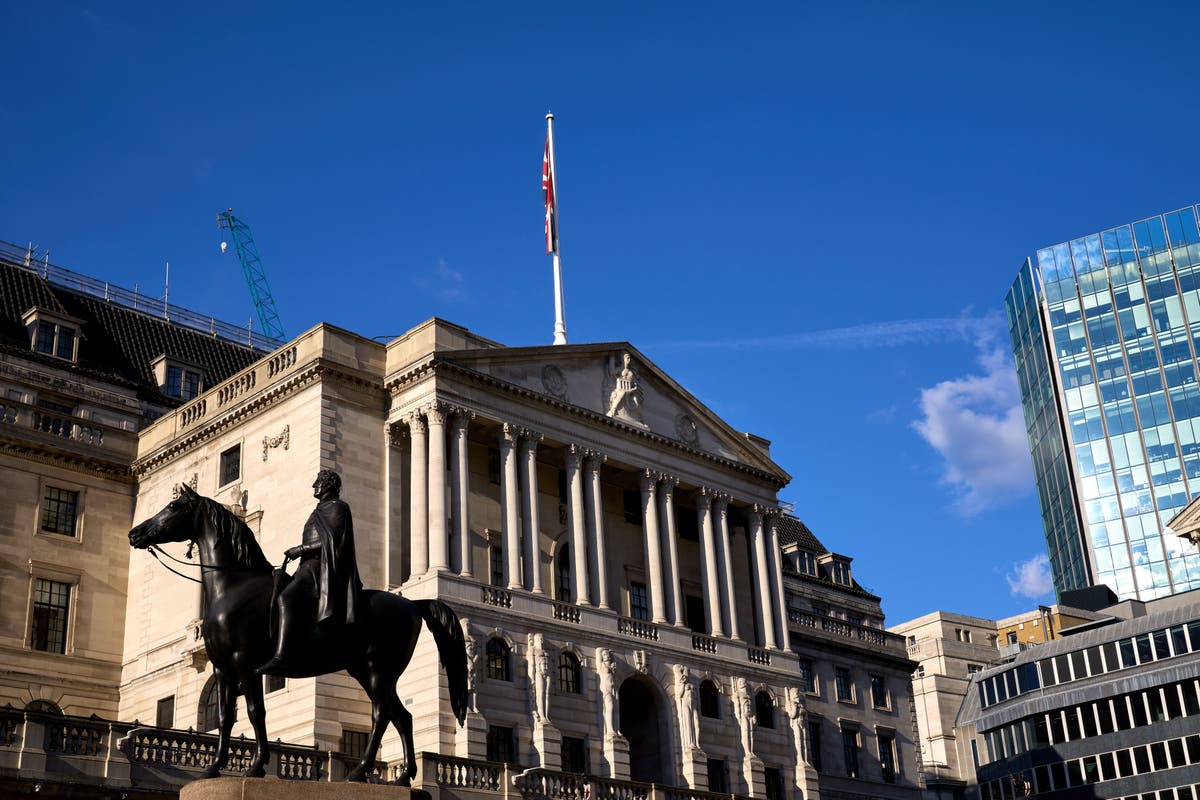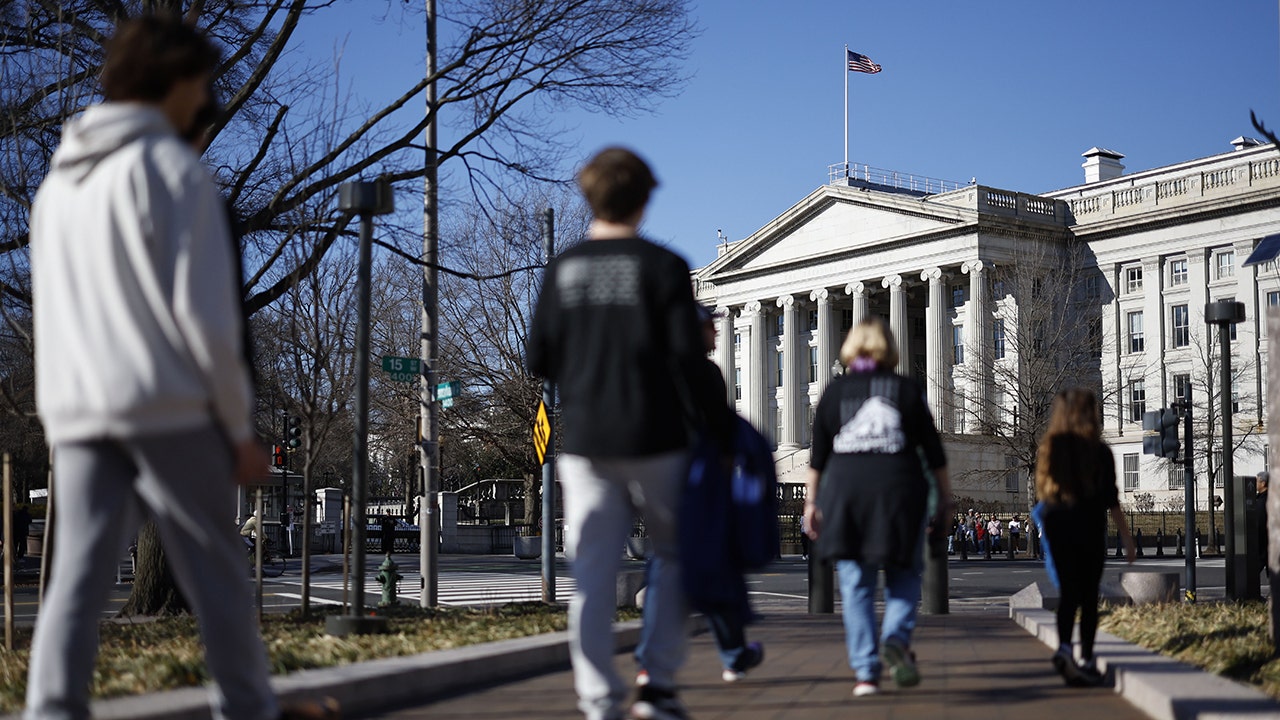-
Pat Flood (@rebarcock) passed away 9/21/25. Pat played a huge role in encouraging the devolopmemt of this site and donated the very first dollar to get it started. Check the thread at the top of the board for the obituary and please feel free to pay your respects there. I am going to get all the content from that thread over to his family so they can see how many people really cared for Pat outside of what they ever knew. Pat loved to tell stories and always wanted everyone else to tell stories. I think a great way we can honor Pat is to tell a story in his thread (also pinned at the top of the board).
You are using an out of date browser. It may not display this or other websites correctly.
You should upgrade or use an alternative browser.
You should upgrade or use an alternative browser.
Stock Market Meltdown Megathread
- Thread starter MalO
- Start date
Exactly. I’m Gen. X and we heard the same bullshit. The problem is the rest of us are at the mercy of these satanic megalomaniacs. All they have to do when people start understanding the game is shake the jar and we all turn on each other.Typical boomer response to anything and everything. It’s all the younger generations fault right, cuz they’ve been running everything the past 50 years right
MalO
Elite
The Bank of England is asking the important questions. Like "is inflation too low?"

 www.standard.co.uk
www.standard.co.uk
Anyone here from the UK? What are your thoughts on the Bank of England making the printer go BRRRRRRRRRRR even harder?

Bank of England interest rate-setter warns inflation may get too low
Silvana Tenreyro has been one of the Monetary Policy Committee’s most consistently dovish members
“If inflation is too low, or negative, then some people may put off spending because they expect prices to fall,” the Bank notes in its explanation of the 2 per cent target.
However, with year-on-year price rises still in double-digits, most of the Monetary Policy Committee have aimed to bring the figure down by voting for a number of recent interest rate hikes.
Anyone here from the UK? What are your thoughts on the Bank of England making the printer go BRRRRRRRRRRR even harder?
LOL. they are paying $15 for a dozen eggs. LOL.The Bank of England is asking the important questions. Like "is inflation too low?"

Bank of England interest rate-setter warns inflation may get too low
Silvana Tenreyro has been one of the Monetary Policy Committee’s most consistently dovish memberswww.standard.co.uk
Anyone here from the UK? What are your thoughts on the Bank of England making the printer go BRRRRRRRRRRR even harder?
MalO
Elite
In response to the 2008 financial crisis, the Fed introduced a hodge podge of emergency lending programs to Wall Street’s biggest banks, as well as cranking out its traditional discount window loans. While the Fed released general details of what the programs were created to do, it did not release the names of the Wall Street firms that were doing the bulk of the borrowing, or the sums borrowed by each institution.
A tenacious investigative reporter at Bloomberg News, the late Mark Pittman, filed a Freedom of Information Act (FOIA) request with the Fed for the names of the banks, the amounts borrowed and the terms. Under the law, the Fed had to respond in 20 business days. The Fed stalled Pittman for six months, leading to the parent of Bloomberg News, Bloomberg LP, filing a lawsuit against the Fed in the Federal District Court in Manhattan in November 2008. Bloomberg won that suit. The Fed then appealed the decision to the Second Circuit Court of Appeals. A large number of other mainstream media outlets and groups filed an Amicus brief in the matter, in support of the release of the information.
The Fed also lost at the Second Circuit. The Fed was, apparently, too embarrassed to take the case to the U.S. Supreme Court, because President Obama’s acting Solicitor General, Neal Katyal, planned to file a brief contrary to the Fed’s position, so a group called The Clearing House Association LLC, made up of some of the very same Wall Street banks that were being bailed out by the Fed, filed their own appeal with the Supreme Court. The Supreme Court declined to hear the case in March of 2011, leaving the decision of the Second Circuit standing.
The financial reform legislation known as the Dodd-Frank Act (which was signed into law by President Obama on July 21, 2010) had forced the Fed to release the transaction details of its seven emergency lending facilities in December of 2010. When the Supreme Court declined to hear the court case, the Fed finally released the discount window transactions in March 2011.
On March 21, 2011, then Bloomberg News Editor in Chief Matthew Winkler released this statement:
“At some point long before the credit markets seized up in 2007, financial markets collapsed and the economy plunged into the worst recession since the 1930s, the Federal Reserve forgot that it is the central bank for the people of the United States and not a private academy where decisions of great importance may be withheld from public scrutiny. As only Congress has the constitutional power to coin money, Congress delegates that power to the Fed and the Fed must be accountable to Congress, especially in disclosing what it does with the people’s money.”
The Dodd-Frank legislation, thanks to an amendment by Senator Bernie Sanders, required the Government Accountability Office (GAO) to conduct an audit of the Fed’s emergency lending programs. When that information was released in July of 2011, it revealed that the Fed had sluiced more than $16 trillion in cumulative loans at below-market interest rates to teetering banks. (Just three Wall Street firms, Citigroup, Morgan Stanley and Merrill Lynch, received $5.7 trillion of that.)
The GAO report notes on page two that the audit does not include the Fed’s loans made through its discount window during the financial crisis. Also, in a tiny footnote on page 2 of the GAO audit, there is this statement: “…this report does not cover the single-tranche term repurchase agreements conducted by FRBNY in 2008. FRBNY conducted these repurchase agreements with primary dealers through an auction process under its statutory authority for conducting temporary open market operations.” FRBNY stands for the Federal Reserve Bank of New York – the deeply conflicted and crony regulator of Wall Street’s largest banks, which is, literally, owned by the same banks. (See These Are the Banks that Own the New York Fed and Its Money Button.)
When the Levy Institute of Economics tallied up all of the Fed’s lending programs, including the single-tranche repurchase agreements (called ST OMO or single-tranche open market operations) and added in the Fed’s dollar swap lines, it came up with a cumulative tally of $29 trillion in emergency Fed loans.
Mainstream media’s attitude about holding the Fed accountable to the people has changed dramatically for the worse since the 2008 crisis.
Wall Street On Parade is the only media outlet that continues to demand accountability for the former President of the Dallas Fed, Robert Kaplan, making million dollar plus trades in S&P 500 futures while sitting on inside information as a voting member of the Federal Reserve’s Federal Open Market Committee (FOMC). (See After 16 Months, There Are Still No Arrests in the Fed’s Trading Scandal.) The Chair of the Fed, Jerome (Jay) Powell, had the audacity to refer this investigation to the Fed’s own Inspector General, who reports to the Fed Board of Governors that is chaired by Powell.
Wall Street On Parade is also the only media outlet to crunch the numbers and report on another multi-trillion dollar bailout of the mega banks on Wall Street by the Fed that began on September 17, 2019 – months before there was any COVID-19 pandemic that the Fed could blame for the relaunch of its emergency lending programs.
So it turns out that our financial system collapsed before the 2008 mortgage crisis happened and the Fed kept that secret. The Fed has kept the banking system on life support by funneling trillions and trillions of dollars into it.
So this is why our economy is a miserable cesspool of ruin. There is no way to make things better as long as this continues. As long as the Fed continues the life support things will keep getting worse.
MalO
Elite
Their words. Not mine. lmao
Economist fears ‘end of capitalism’ amid ‘Greedflation’ | Fortune
Société Générale’s Albert Edwards says “something seems to have broken with capitalism.”
fortune.com
MalO
Elite
Remember all those times when we were told there is no recession and everything is fine?

 www.foxbusiness.com
www.foxbusiness.com
Oh dear.
I don't think it's going to be "mild"

Fed expects a 'mild' recession to begin later this year, meeting minutes show
Federal Reserve meeting minutes released Wednesday show that central bank staff expect financial sector upheaval to trigger a recession sometime this year.
Oh dear.
I don't think it's going to be "mild"
MalO
Elite
Plutocratic corruption is hurting nearly everyone in the United States. Everyone in the bottom 90% of earners are touched by this somehow.
The entire Federal government has to be dragged into the street and shot. Burn down the entire system, collapse the banks, and start up an entirely new government with all new people to run things.
I think that's not just the best way forward, but the only way to actually improve things.
Another bank failure.
Biden’s world.
What about vanguard?I heard that Blackrock is limiting investors to withdrawing only 5% of their money per week due to a huge uptick in people pulling their money out of fear of property prices crashing and rentals going empty.
MalO
Elite
Something is going on behind the scenes.
The past couple months apes have been trying to get people to terminate plan accounts in Computershare and move all shares into 100% book holding. Shares held in book holding at the transfer agent are off the stock market and can't be used for lending or locates.
One scummy thing that we think the DTCC has been doing is using shares in Computershare as locates. What this means is when time comes to buy to close out a position they do a locate instead of actually buying it. They say "oh look these shares are available, we could buy them if we needed to, but we're not and we're going to roll over the short position instead"
But the thing is we aren't selling. The locate is wrong.
Pure book with no plan holding prevents the locate. If we're right and this is how it works, then this pot is starting to boil again. Another squeeze could be coming.
The past couple months apes have been trying to get people to terminate plan accounts in Computershare and move all shares into 100% book holding. Shares held in book holding at the transfer agent are off the stock market and can't be used for lending or locates.
One scummy thing that we think the DTCC has been doing is using shares in Computershare as locates. What this means is when time comes to buy to close out a position they do a locate instead of actually buying it. They say "oh look these shares are available, we could buy them if we needed to, but we're not and we're going to roll over the short position instead"
But the thing is we aren't selling. The locate is wrong.
Pure book with no plan holding prevents the locate. If we're right and this is how it works, then this pot is starting to boil again. Another squeeze could be coming.
Haven't heard. Vanguard is more mainstream..Yes? Isn't Blackrock more of a selective fund?What about vanguard?
Something is going on behind the scenes.
The past couple months apes have been trying to get people to terminate plan accounts in Computershare and move all shares into 100% book holding. Shares held in book holding at the transfer agent are off the stock market and can't be used for lending or locates.
One scummy thing that we think the DTCC has been doing is using shares in Computershare as locates. What this means is when time comes to buy to close out a position they do a locate instead of actually buying it. They say "oh look these shares are available, we could buy them if we needed to, but we're not and we're going to roll over the short position instead"
But the thing is we aren't selling. The locate is wrong.
Pure book with no plan holding prevents the locate. If we're right and this is how it works, then this pot is starting to boil again. Another squeeze could be coming.
That reminds me of the metal markets. Big players would sell tons of paper gold and silver for below market price to drive the price down. These are people that down own gold and aren't buying it but they are just passing paper contracts back and forth with a lower price to keep the physical price lower. A couple people have actually served jail time for this but its a drop in the bucket.
MalO
Elite
lol that last thread was deleted. That was fast.
It had to do with DTC "haircuts" which reduce the value of collateral in the banking system. The DTC targeted a number of banks and gave them a 100% haircut, effective today.
The value of stock held by these banks are 0 today for collateral purposes. This should be all rights force them into default on their debts.
But who knows? This market is completely fraudulent. It runs on lies and witchery instead of math.
* Someone else posted it again:
It had to do with DTC "haircuts" which reduce the value of collateral in the banking system. The DTC targeted a number of banks and gave them a 100% haircut, effective today.
The value of stock held by these banks are 0 today for collateral purposes. This should be all rights force them into default on their debts.
But who knows? This market is completely fraudulent. It runs on lies and witchery instead of math.
* Someone else posted it again:
Last edited:
MalO
Elite
Interesting that KPMG provided consulting to Silcon Valley Bank, First Republic Bank, and Signature Bank. It's also interesting that the banks say they are fine, the government says the banks are fine, KPMG said they were fine, and Wall Street thinks they are about to collapse and are selling their bank stocks and shorting the hell out of the banks.
Just like in 2008 this could partly be a ratings agency problem. Financial institutions want good ratings and the ratings agencies want to give good ratings because otherwise no one pays them money to do their job. So they give good ratings to bad institutions, which seem like they collapse out of the blue to everyone else because they had good ratings didn't they?
In 2008 it was mortgage backed securities (MBS) which were dogshit but MBS was treated like good investment by all the banks and ratings agencies. So when the MBS went tits up, the institutions that had invested in them failed "suddenly". Anyone on the inside and familiar with how it worked wasn't surprised.
Just like in 2008 this could partly be a ratings agency problem. Financial institutions want good ratings and the ratings agencies want to give good ratings because otherwise no one pays them money to do their job. So they give good ratings to bad institutions, which seem like they collapse out of the blue to everyone else because they had good ratings didn't they?
In 2008 it was mortgage backed securities (MBS) which were dogshit but MBS was treated like good investment by all the banks and ratings agencies. So when the MBS went tits up, the institutions that had invested in them failed "suddenly". Anyone on the inside and familiar with how it worked wasn't surprised.
MalO
Elite
I keep expecting the banks to fall like dominos, but they keep surviving like cockroaches instead.
The current economy is not sustainable. CPI is 4.9% for April 2023. That might be down from 2022 but it's still a huge increase from 2021 and a huge miss from the 2% it's supposed to be at.
(I disagree that it should even be at 2% because a stable currency would not experience inflation!)
There are going to be more bank failures. It's just a matter of when. For one they are wasting money on stupid shit like left-wing political activism. For two they embezzle funds so the banking executives live the high life giving themselves bonuses every year even while their banks are hemorrhaging money. For three there's the small problem of this:
Banks are not supposed to create money. But they have been - and that's a big reason that the government hasn't been able to get inflation under control.
Only the Federal Reserve is supposed to create money. The banks are only supposed to store money and move it around.
Perhaps it's time for regulation over digital dollars? Maybe every digital dollar should have the corresponding serial number of a real world physical dollar?
It is too easy to simply make up numbers in a bank account these days. There is no security that prevents this. We just are expected to trust the banks and believe that they don't do it. Of course they do. Could you imagine being an executive working at JP Morgan? Fuck I would make up free money all day long. I would own a fleet of yachts and a brothel full of beautiful women.
And I would brutally crush the pathetic little poors who bank at my establishment. Overdraft three cents? that will be a $50 overdraft fee for every day you don't pay up and put a positive balance in your account. Bitch. How dare they think they can just make up free money like I do? I am the elite. The poors need to know their place.
The current economy is not sustainable. CPI is 4.9% for April 2023. That might be down from 2022 but it's still a huge increase from 2021 and a huge miss from the 2% it's supposed to be at.
(I disagree that it should even be at 2% because a stable currency would not experience inflation!)
There are going to be more bank failures. It's just a matter of when. For one they are wasting money on stupid shit like left-wing political activism. For two they embezzle funds so the banking executives live the high life giving themselves bonuses every year even while their banks are hemorrhaging money. For three there's the small problem of this:
Banks are not supposed to create money. But they have been - and that's a big reason that the government hasn't been able to get inflation under control.
Only the Federal Reserve is supposed to create money. The banks are only supposed to store money and move it around.
Perhaps it's time for regulation over digital dollars? Maybe every digital dollar should have the corresponding serial number of a real world physical dollar?
It is too easy to simply make up numbers in a bank account these days. There is no security that prevents this. We just are expected to trust the banks and believe that they don't do it. Of course they do. Could you imagine being an executive working at JP Morgan? Fuck I would make up free money all day long. I would own a fleet of yachts and a brothel full of beautiful women.
And I would brutally crush the pathetic little poors who bank at my establishment. Overdraft three cents? that will be a $50 overdraft fee for every day you don't pay up and put a positive balance in your account. Bitch. How dare they think they can just make up free money like I do? I am the elite. The poors need to know their place.
Similar threads
- Replies
- 10
- Views
- 329
- Replies
- 13
- Views
- 469
- Replies
- 10
- Views
- 609
